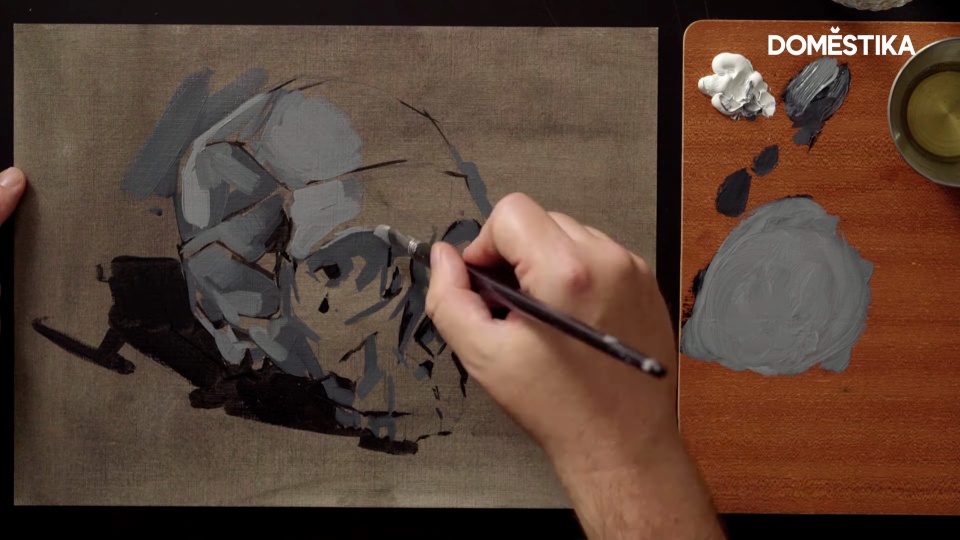Painting Tutorial: Water Mixable Oils for Beginners

Learn how to use water mixable oil paints from scratch, with Ale Casanova
Ale Casanova is a Spanish painter and an expert in figurative style who uses both oil paints and watercolors. In this tutorial, he teaches you how to use water mixable oil paints from scratch.
This technique is as versatile as it is full of tricks.
You will need the following materials:
• Soft brushes
(for bigger details) and hard brushes (for smaller details)
• Water mixable oil paints
(choose a premium white and a mid-range black)
• A water mixable oils medium
• Oil painting paper
Find out more in the video!
Start using water mixable oil paints in 4 easy steps
1. Prepare your paper and paints


Paint the background in a fine layer of gray (a mix of black and white) then leave it to dry. Sketch out your drawing in pencil.
Start painting the darkest shades first, applying pure black paint, mixed with a little water and medium to add fluidity. Make sure your mixture remains opaque. You’re now ready to start painting.
2. Introduce your lighter shades

After you’ve covered all of the darkest areas in pure black, mix black and white together to start adding the lighter shades to your drawing. Be careful about placing the highlights and shadows. Picture the precise direction in which the light falls. This will determine which areas are lighter and darker, and therefore which areas require more or less white.
Ale also recommends playing with the background, and allowing it to show through in some areas.
3. Switch paintbrush to start painting the larger spaces

Try using your softest brush for the largest sections of your drawing. Make sure the paint gets into all of the bristles. And always remember to add a little water and medium to your paint.
4. Retouch and experiment with varnish

After finishing your figure, take your smallest brush and use it to correct any mistakes or add highlights in specific areas.
Now you’re ready to have a go with varnish. This technique reinforces the paint in specific places, creating greater depth. You can even use it to generate texture and relief work. Ale recommends using your hardest bristles.
Traditionally, artists apply most varnish to the brightest areas. So use a mix that includes plenty of white.
You can also finish your painting with splashes of pure black to ensure the lights and shades are in the right order.
Love this tutorial? Remember you can launch yourself into the world of oil painting and learn this super versatile technique in Ale Casanova’s online course: Oil Painting for Beginners.
You may also like:
- Realistic Oil Portraiture: Conveying Detail and Expression, a course by Alan Coulson
- Artistic Portrait with Watercolors, a course by Ale Casanova
- 16 Free Tutorials: Watercolor Techniques to Take you From Beginner to Pro
- Do’s and Don’ts When Drawing From Photos and Videos




3 comments
displayname4592539
displayname4592539
displayname2885178
PlusCourses that masterfully explore realism in painting and drawing:
- Contemporary Hyperrealistic Portraiture, A course by Luiz Escañuela
- Expressive Oil Portraiture: Explore the Alla Prima Technique, A course by A.J. Alper